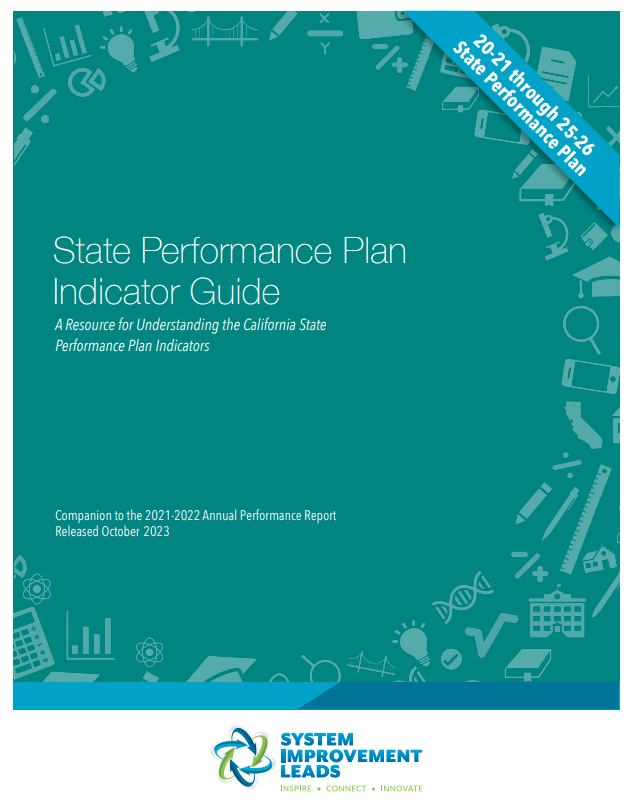
SELPA System Improvement Leads Focus on Data Improvement
The California Department of Education (CDE) monitors compliance with state and federal laws regarding the provisions of the Individuals with Disabilities Education Act (IDEA). They do this by using the data that our local educational agencies (LEAs) input into their student information systems for all students and for students with disabilities. Having all members of the student's team, from case managers to district-level data and special education administrators, understand the way in which data is collected and analyzed helps prevent potential areas of non-compliance and allows teams to plan for necessary staff training. Each SELPA plays a key role in assisting LEAs in improving areas of non-compliance and by locally and regionally providing appropriate professional learning.
The CDE compliance monitoring process uses three levels of monitoring for special education "elements." Elements that are monitored include a combination of special education indicators, California Dashboard indicators, and other requirements. For those who have met special education targets in all areas, Universal monitoring is indicated. For LEAs who have not met one or more specific targets for the current year, Targeted monitoring is indicated. For LEAs who have not met one or more specific targets over a period of three years, Intensive monitoring is required. Targeted monitoring designation is based on performance on Annual Performance Report Indicators, Disproportionality Indicators, and Timeline Indicators. Intensive monitoring designation may be based on poor performance relative to other LEAs on Preschool and/or School-Age Indicators most closely aligned with the provision of a free and appropriate public education (FAPE) in the least restrictive environment (LRE). Targeted and Intensive monitoring requires a review process and the development of a Compliance and Improvement Monitoring plan or CIM Plan. These reviews require a team of educational partners within the LEA to review relevant data, identify trends and root causes, and develop action steps to undertake to improve compliance in these areas.

The SELPA System Improvement Leads have created a wealth of resources with their Improvement Data Center to help better report and track SELPA and LEA data. The Data Quality Toolkit takes users through key activities in data governance, system design and development, data use, and culminates in the development of an action plan to improve SELPA and LEA data. Click on the image at the left for a 5-minute introduction to this toolkit.
The Improvement Data Center also houses a powerful database that allows LEAs to track trend data in each indicator or element over time to determine target areas for focus as they go about developing their special education plans and local control accountability plans. It produces charts and graphs, it leads users to guiding questions to consider, and it includes links to educational resource data. There is even a special "LEA Data Drilldown" feature that allows more in-depth exploration and learning.
To visit the Improvement Data Center, please visit the System Improvement Leads website at https://systemimprovement.org/data-improvement .
The Individuals with Disabilities Education Act (IDEA 2004) requires states and local education agencies (LEAs) to take steps to address disproportionate representation. Disproportionality refers to the “overrepresentation” of a particular racial or ethnic group in one of four areas:
The California Department of Education (CDE) outlined a process for addressing disproportionality from a compliance perspective. Significant Disproportionality occurs when a particular indicator is not meeting targets for three of the last four years. Learn more about the process by visiting our Equity and Disproportionality webpage, or by visiting the webpage of the State Performance Plan - Technical Assistance Project coordinated through the Napa County Office of Education.

The SELPA Administrators of California CALPADS/Compliance Committee (C3) consists of 7 members who have expertise and interest in leadership in all processes related to improving compliance, data quality, techical assistance, and continuous improvement activities not only within their SELPAs but on a wider scale. The work carried out by this committee is expansive and overlaps several other areas of this website including Technical Assistance, the Statewide System of Support, Equity and Disproportionality, Fiscal Guidance, and more. The SELPA C3 Team is highly committed to bringing members more thorough knowledge and understanding of issues related to the CDE’s collection of performance and compliance information, increasingly important areas in the era of results-driven accountability. The CALPADS/Compliance Committee responsibilities include:
 cover of the State Performance Plan Indicator Guide that links to the actual document." width="" height="" />
cover of the State Performance Plan Indicator Guide that links to the actual document." width="" height="" />CDE Focused Monitoring and Technical Assistance - (FMTA) Consultants are assigned geographically and by quality assurance activity to align with the eleven California County Superintendents Educational Services Association (CCSESA) regions.
CDE Compliance and Improvement Monitoring - This link contains information about the Compliance and Improvement Monitoring Process, levels and requirements for each.
CALPADS - CSIS Training YouTube Channel - The California Department of Education (CDE) uses the California Longitudinal Pupil Achievement Data System (CALPADS) to report student information including special education information. Trainings are hosted throughout the year that help end-users and district-level data specialists stay current.
State Performance Plan Indicator Guide - Produced by the SELPA Systems Improvement Leads, this manual explains in-depth how each indicator is measured, the specific formulas applied, data sources, connections between special education and the California Dashboard, and more.